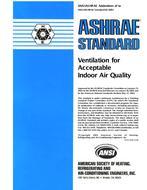Techniques for the analysis of fins with only sensible heat transfer are well known and documented. Even circular fins which have complex solutions can be handled with simplified procedures. However, when condensation occurs simultaneously with the heat transfer, the problem becomes much more complex. Threlkeld offers one analysis that depends on knowing the water-film thickness on the fin. But this is a very nebulous quantity even if it exists.
The most universally accepted method is outlined in Ref 6. It is an adaptation of the work of Ware and Hacha and others. Although this method appears to give good results for design and rating purposes, it also has some undesirable features. For example, the coil surface temperature is assumed to be the only parameter affecting the fin efficiency regardless of moist air conditions. Another disturbing feature is failure of the solution to reduce to the dry coil case when the surface and moist air conditions warrant it. These inconsistancies are troublesome when making general coil studies.
The analysis presented here is the solution of a fin of uniform cross section. The solution with mass transfer reduces to the case of zero mass transfer, and a new parameter is proposed which takes the surface temperature and moist air conditions into account.
Product Details
- Published:
- 1975
- Number of Pages:
- 6
- File Size:
- 1 file , 360 KB
- Product Code(s):
- D-AC-2348
- Note:
- This product is unavailable in Russia, Belarus


